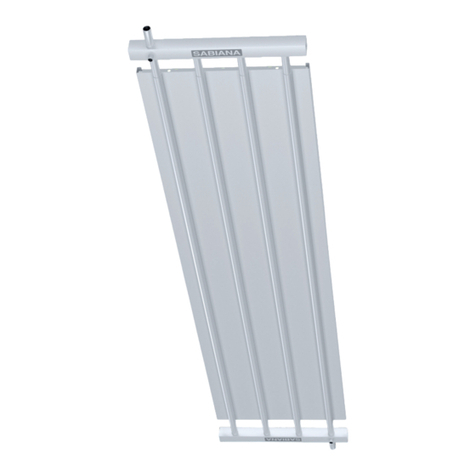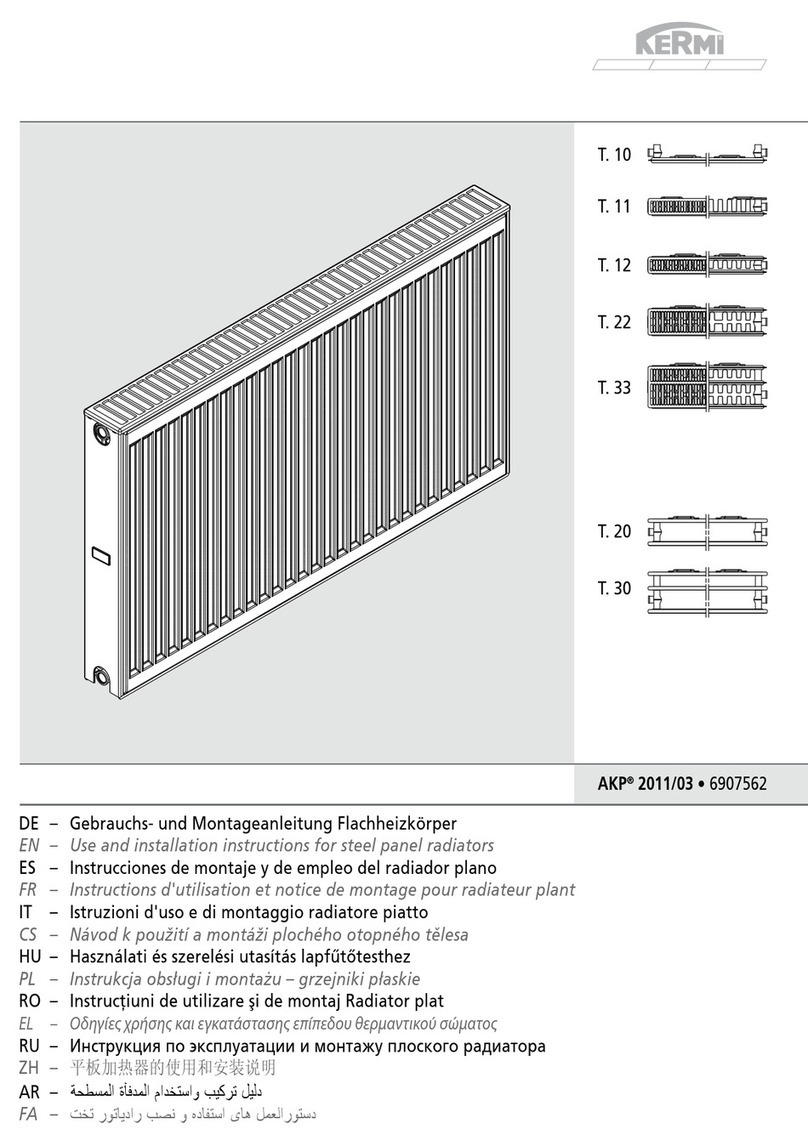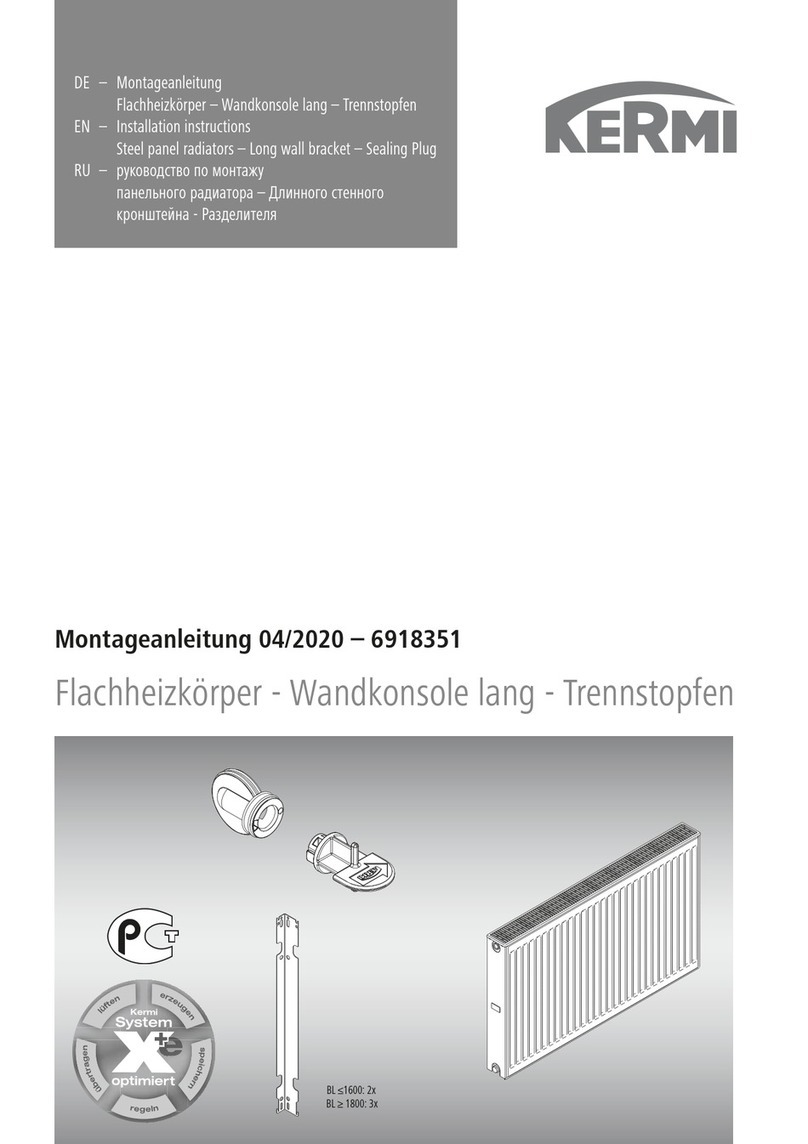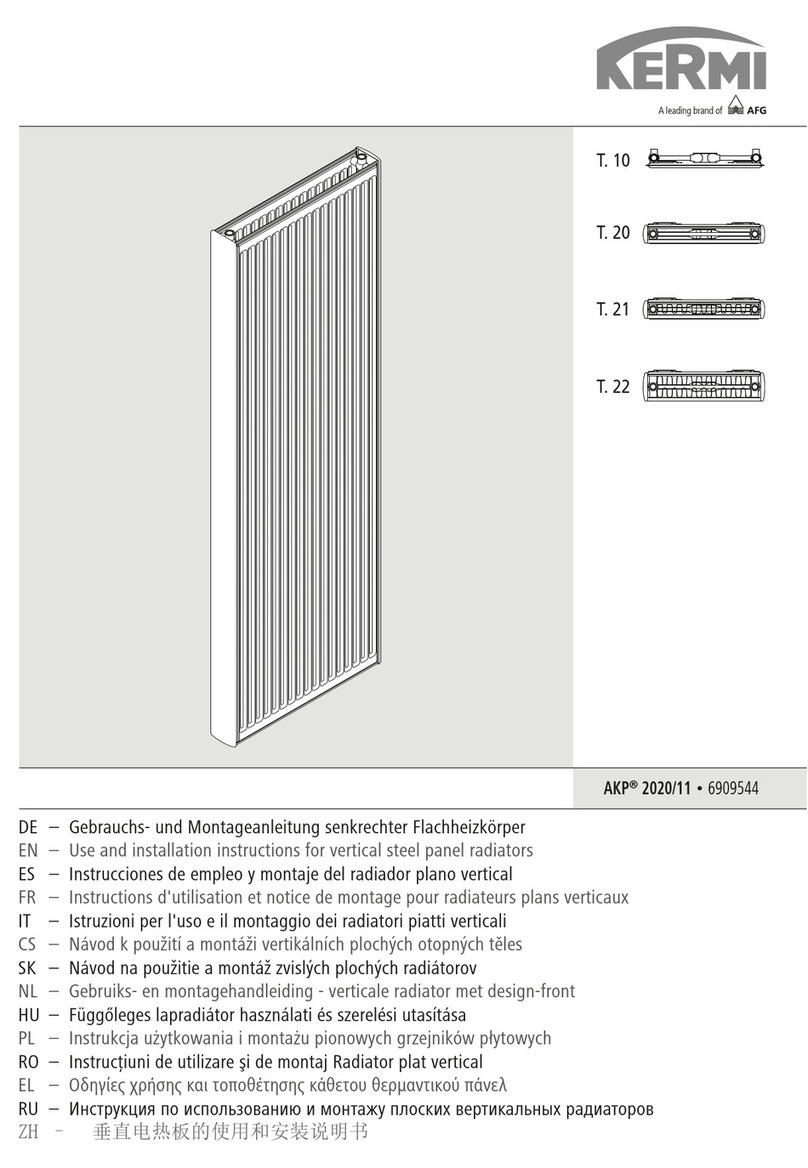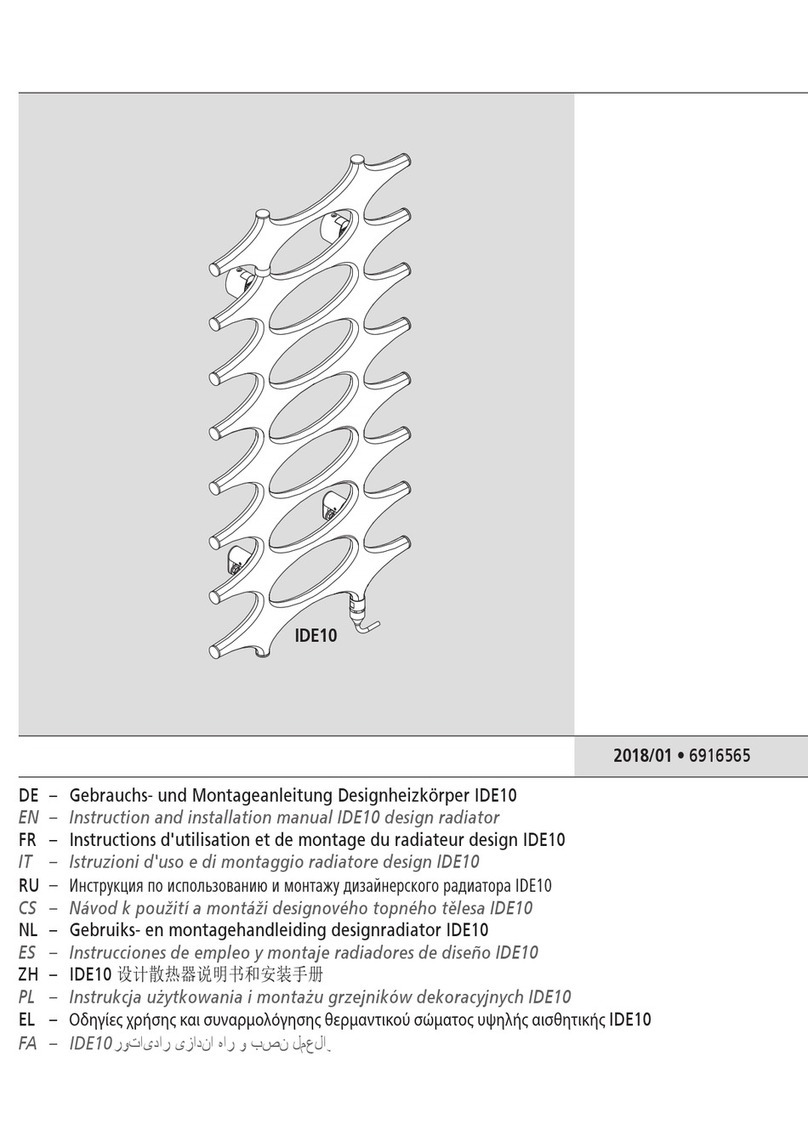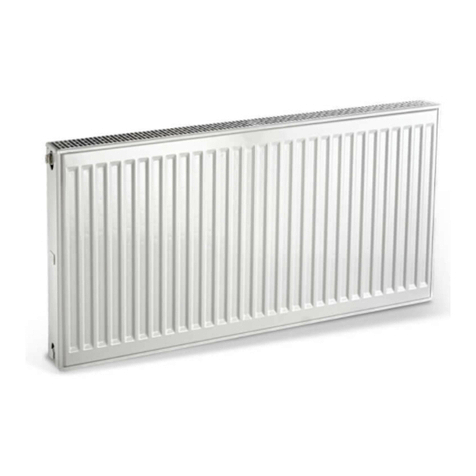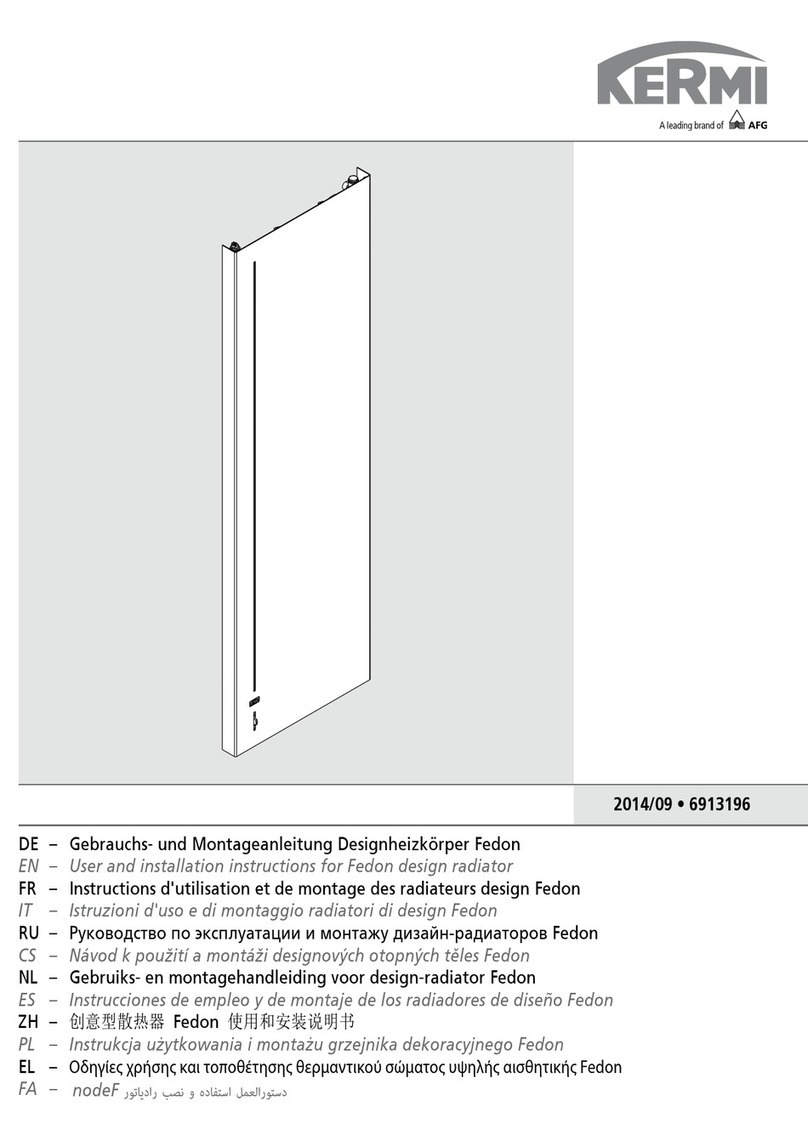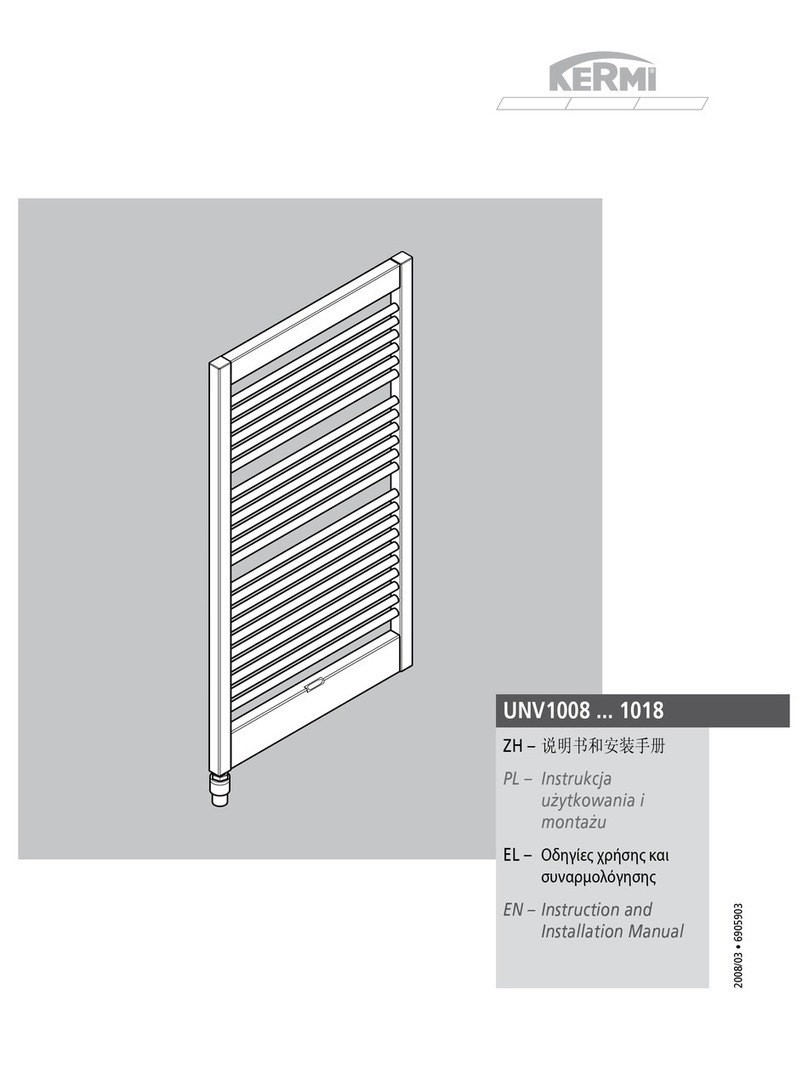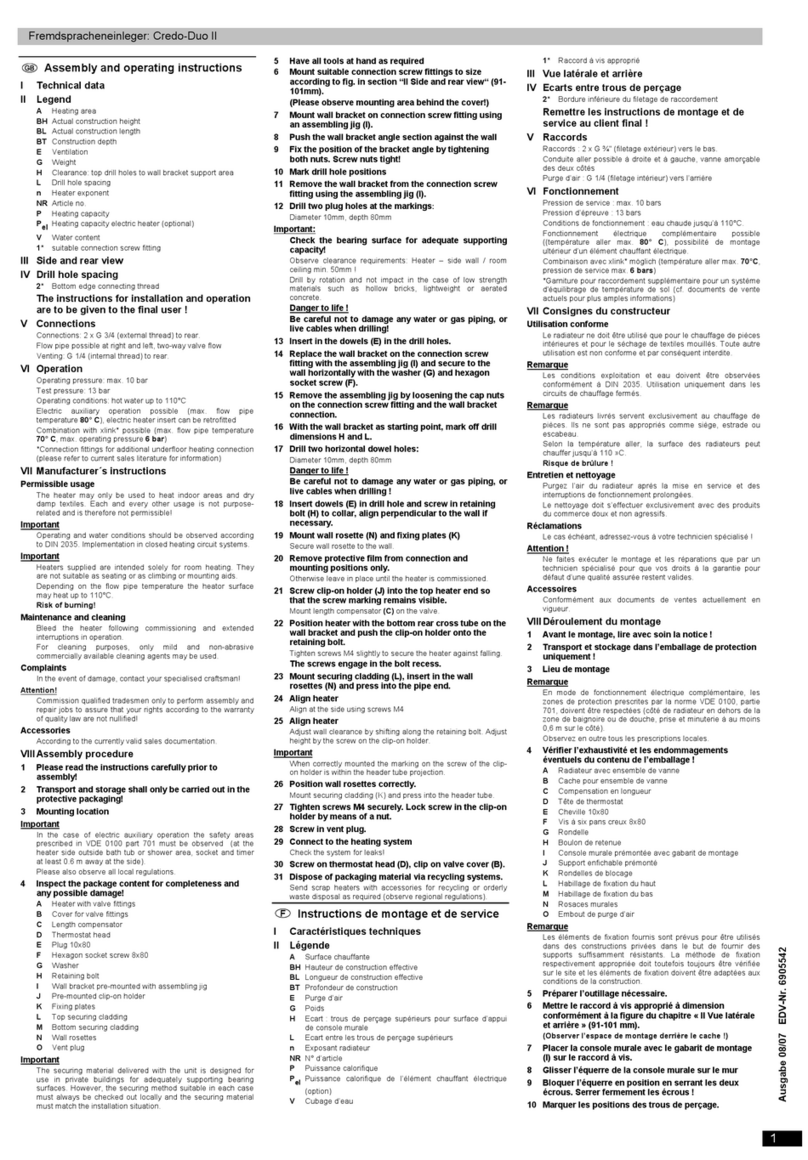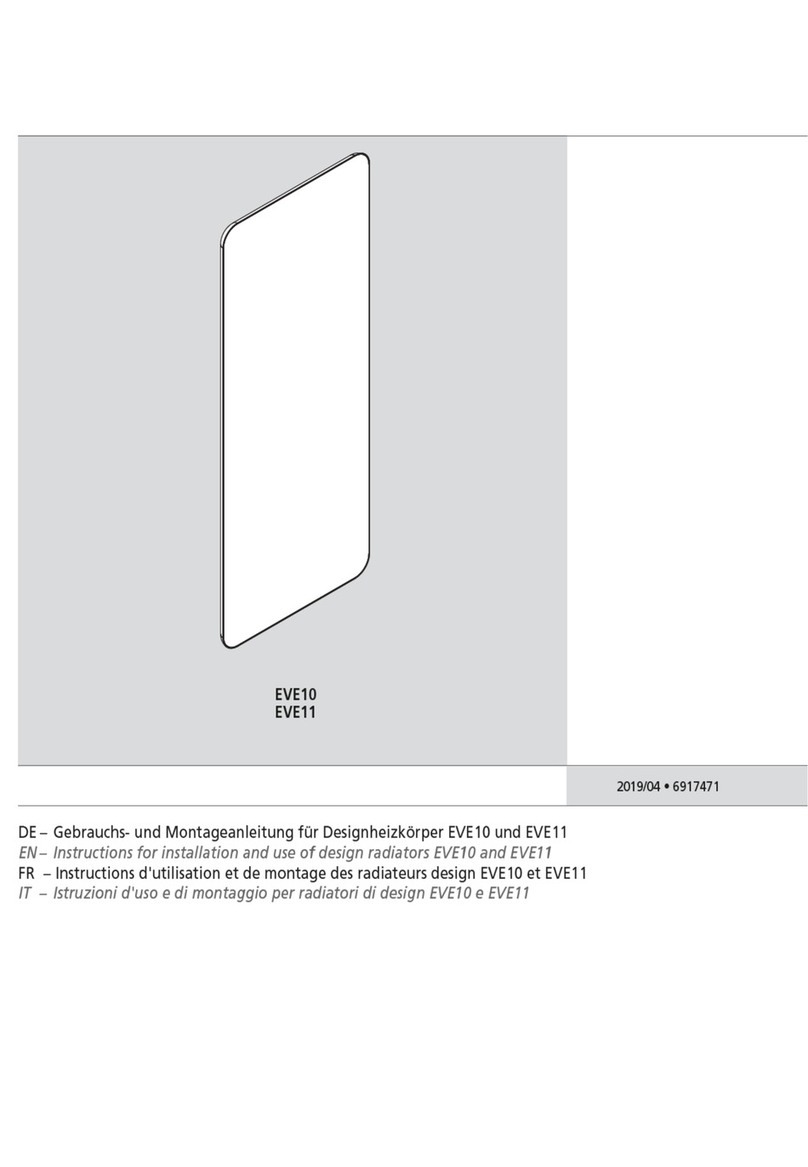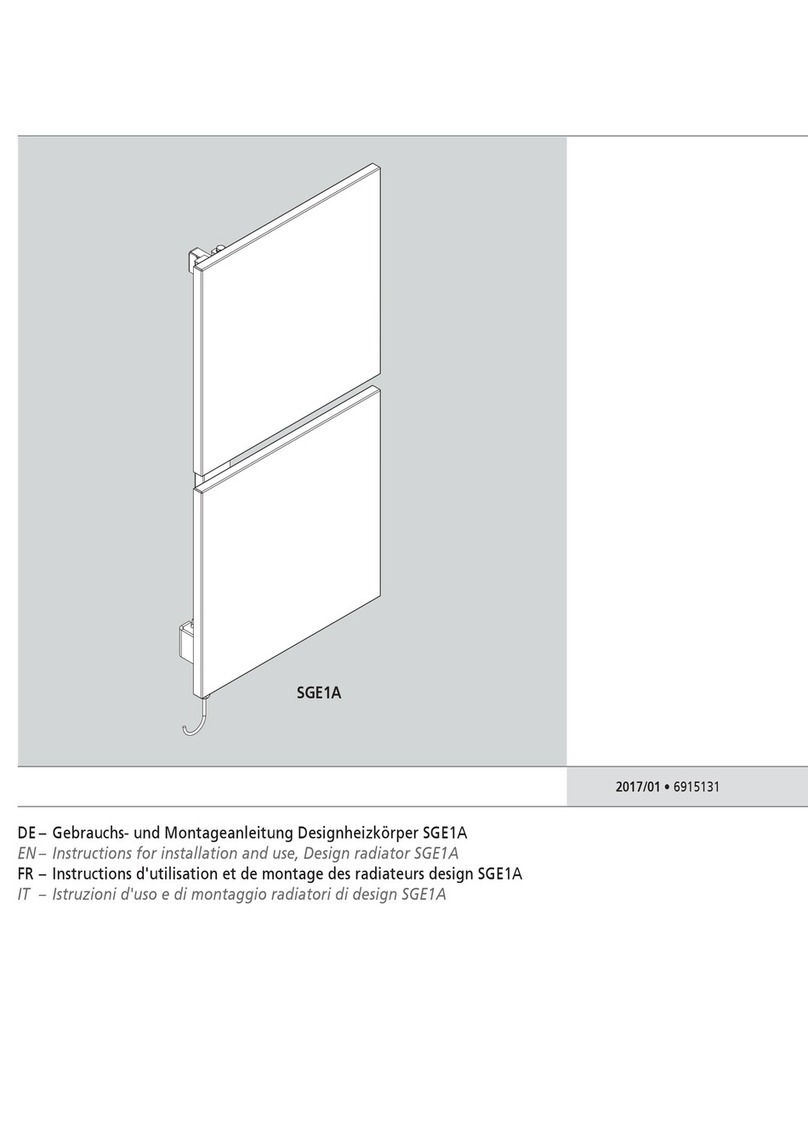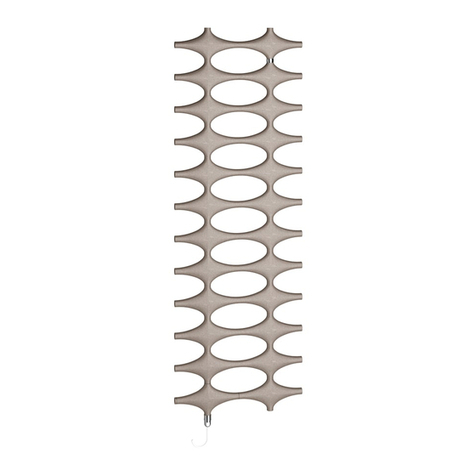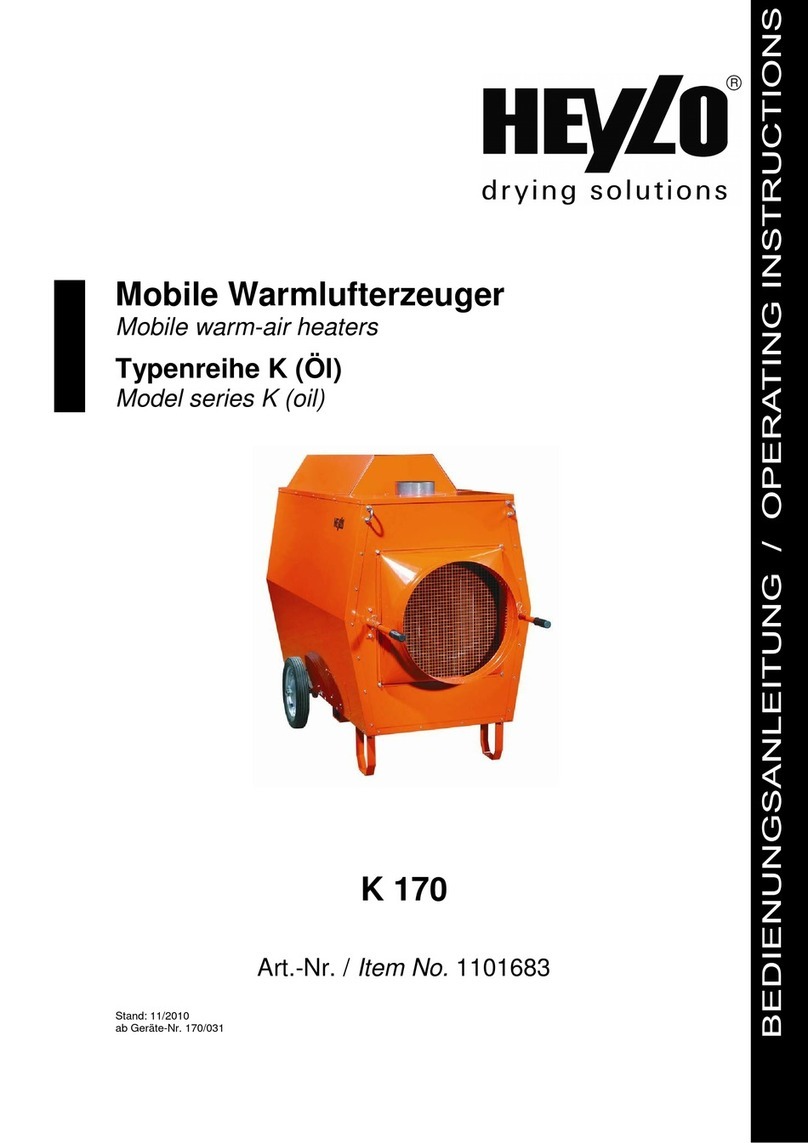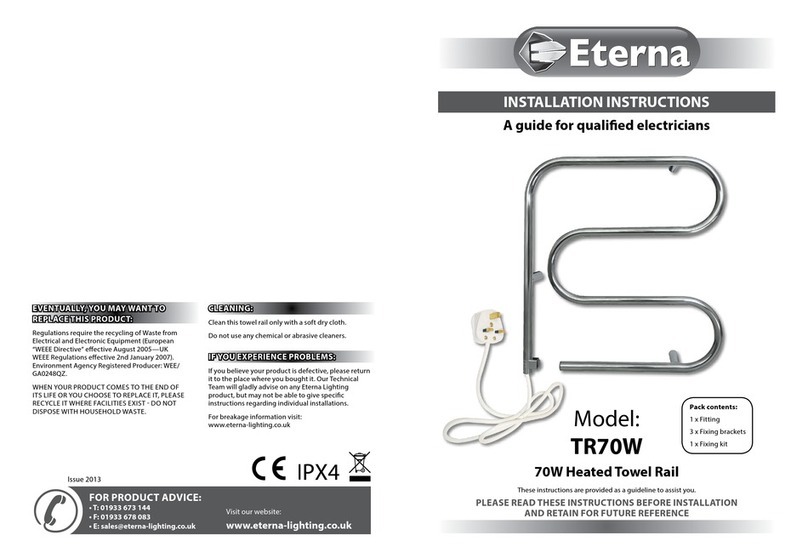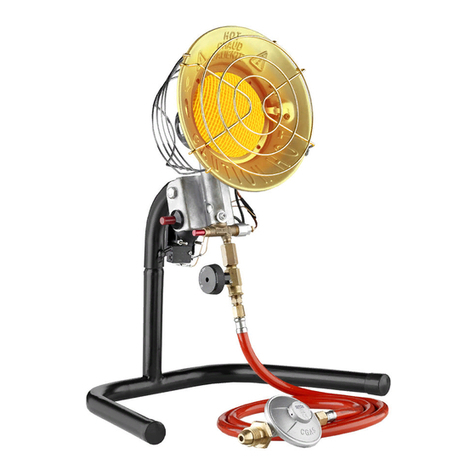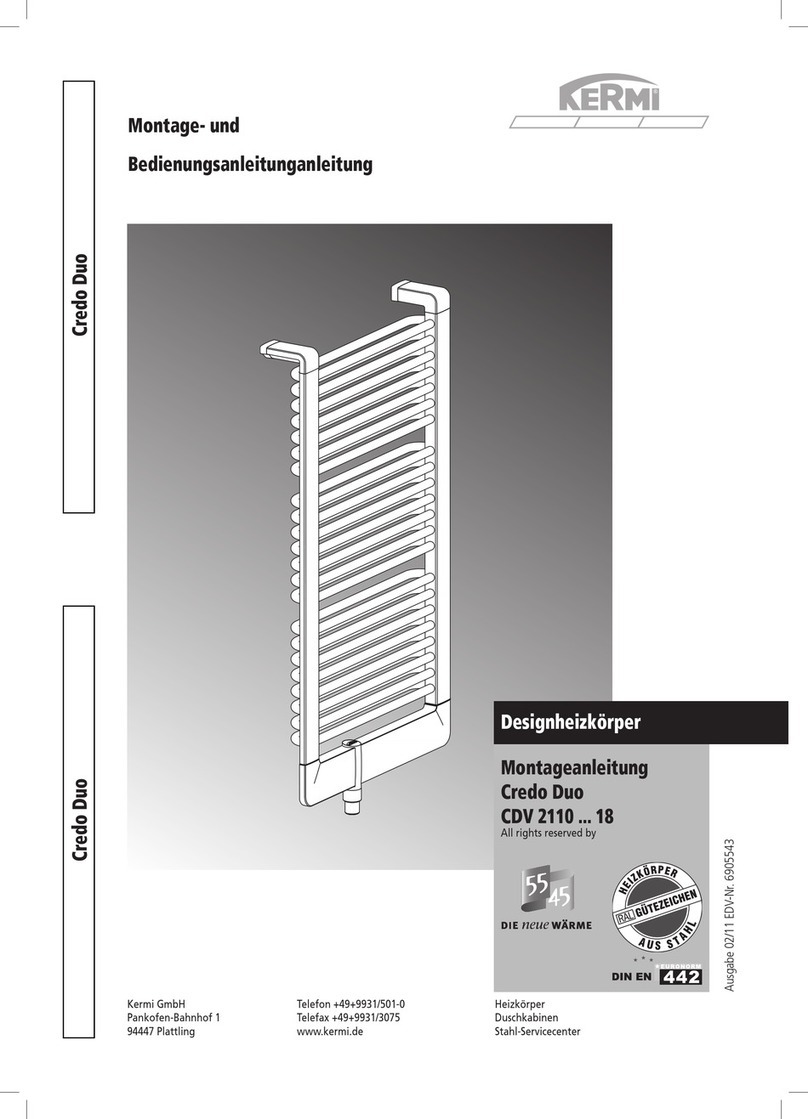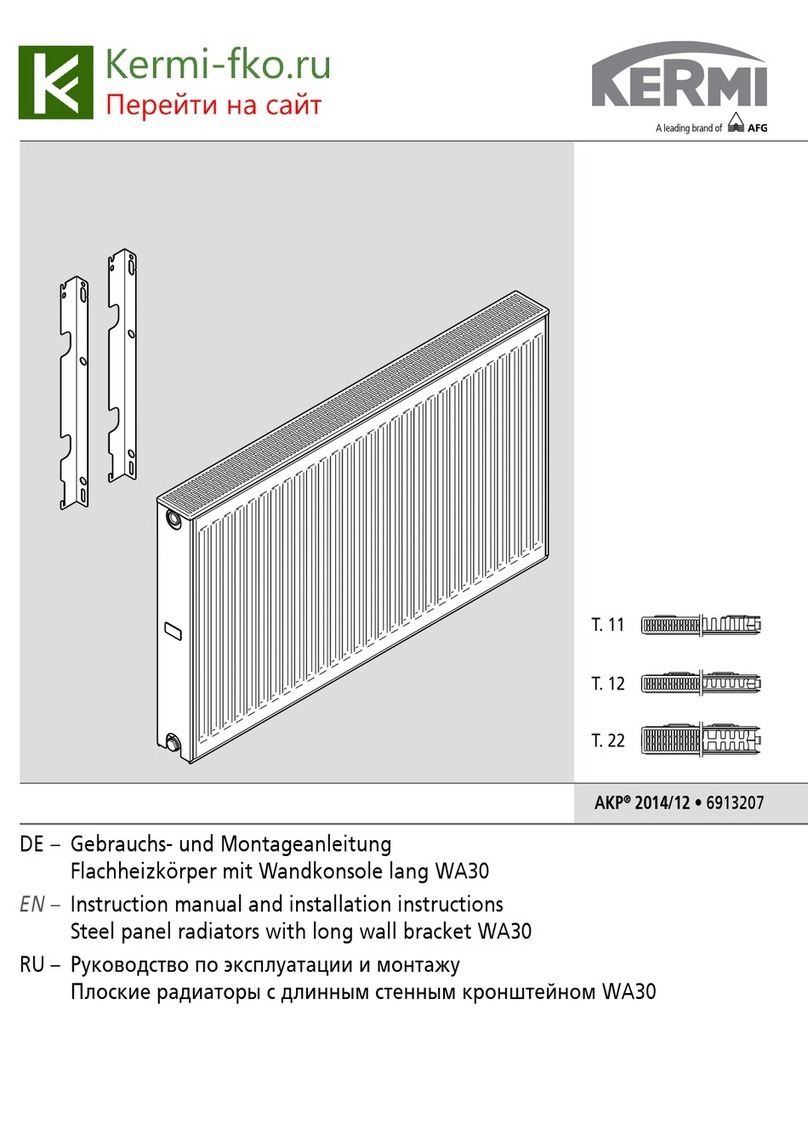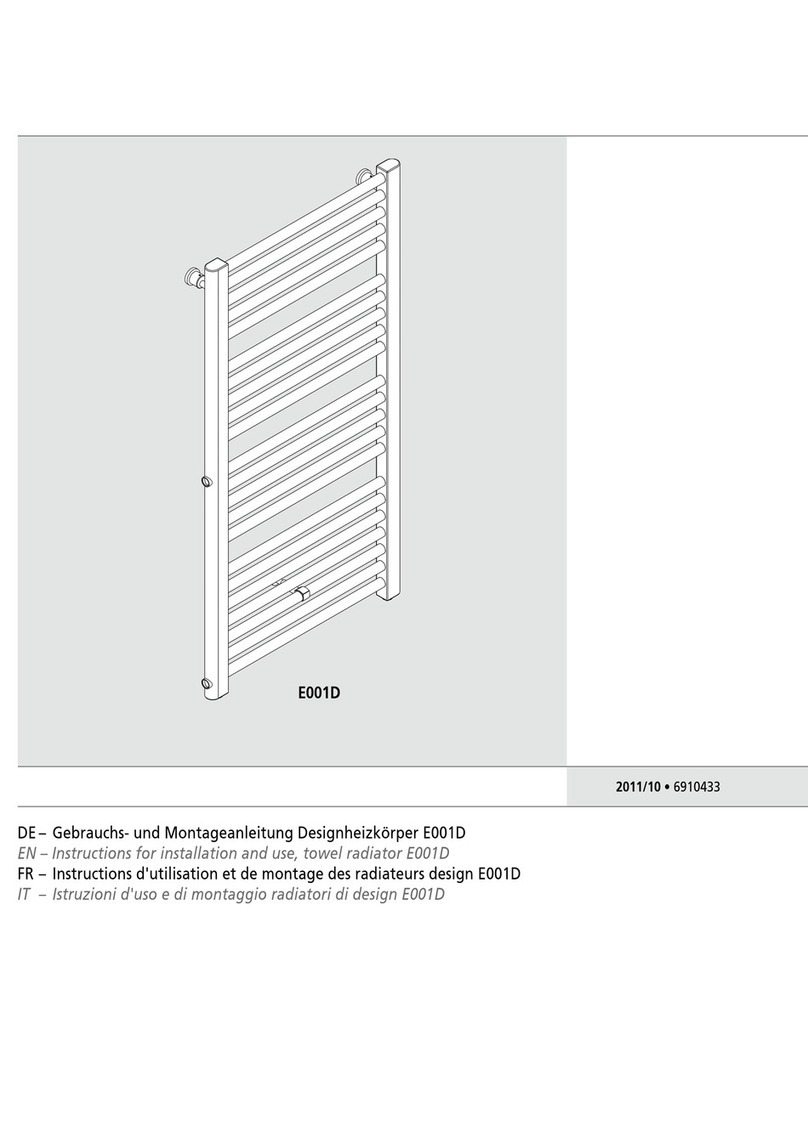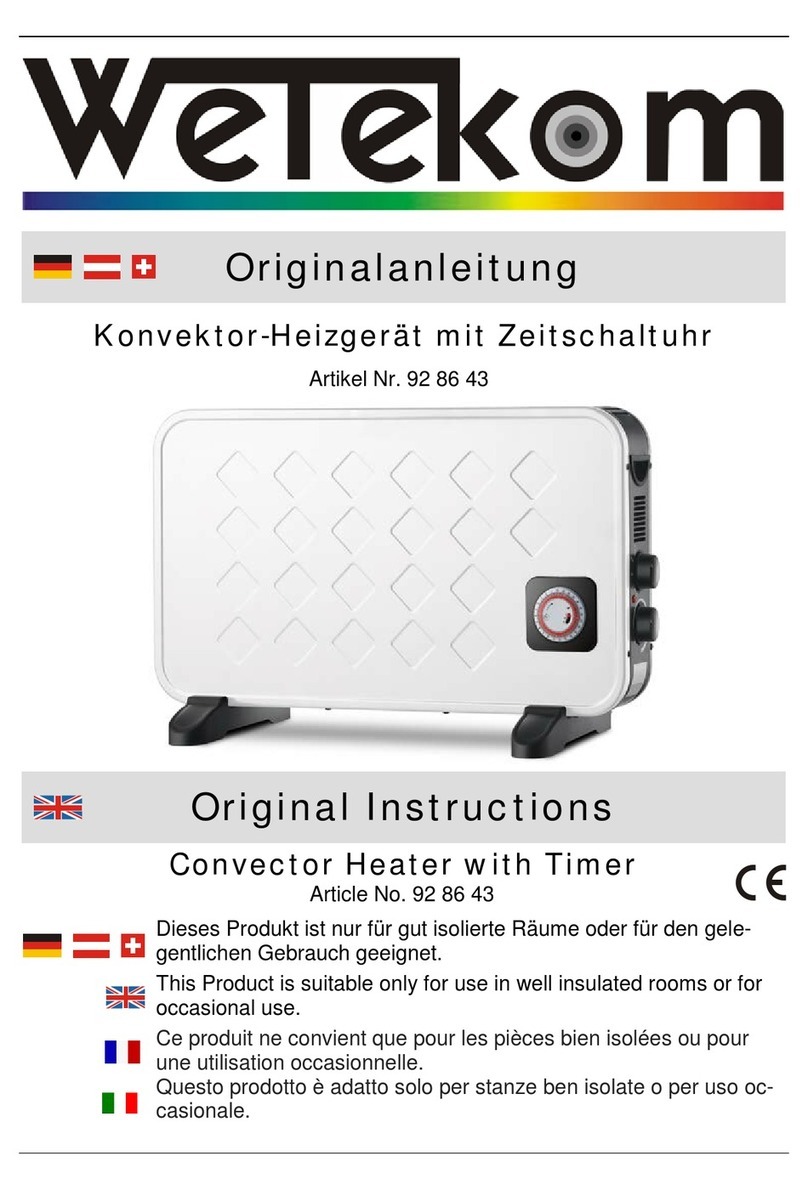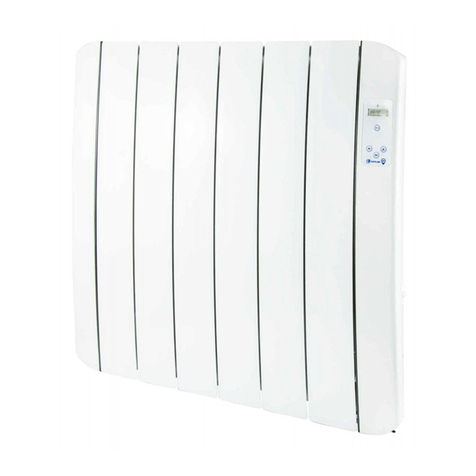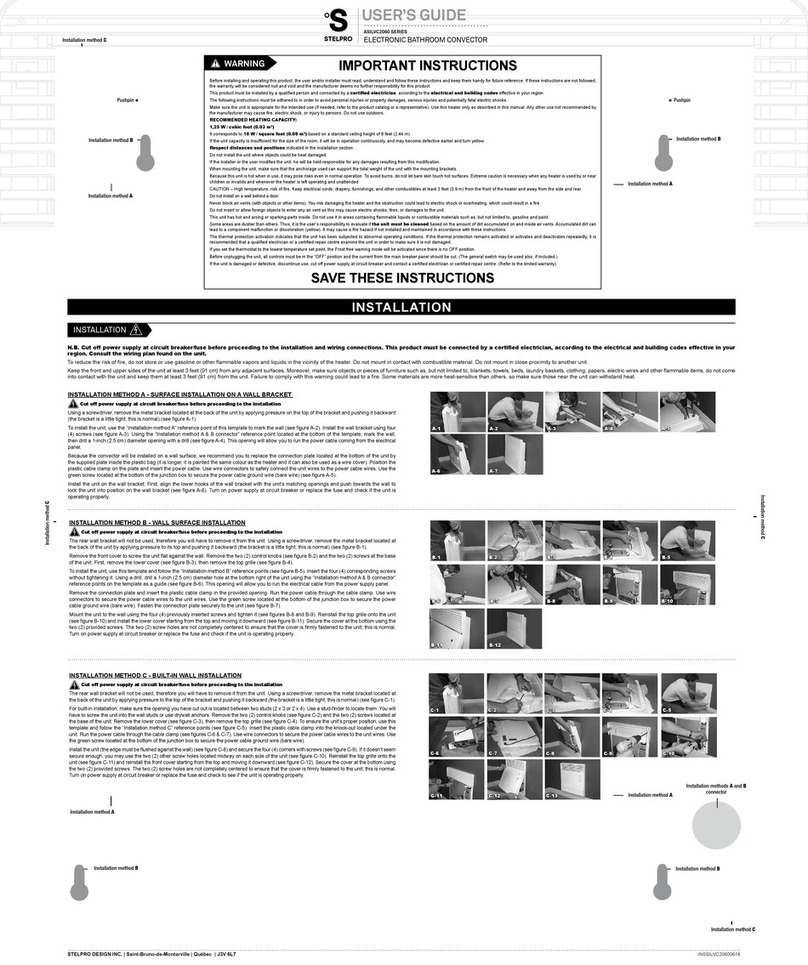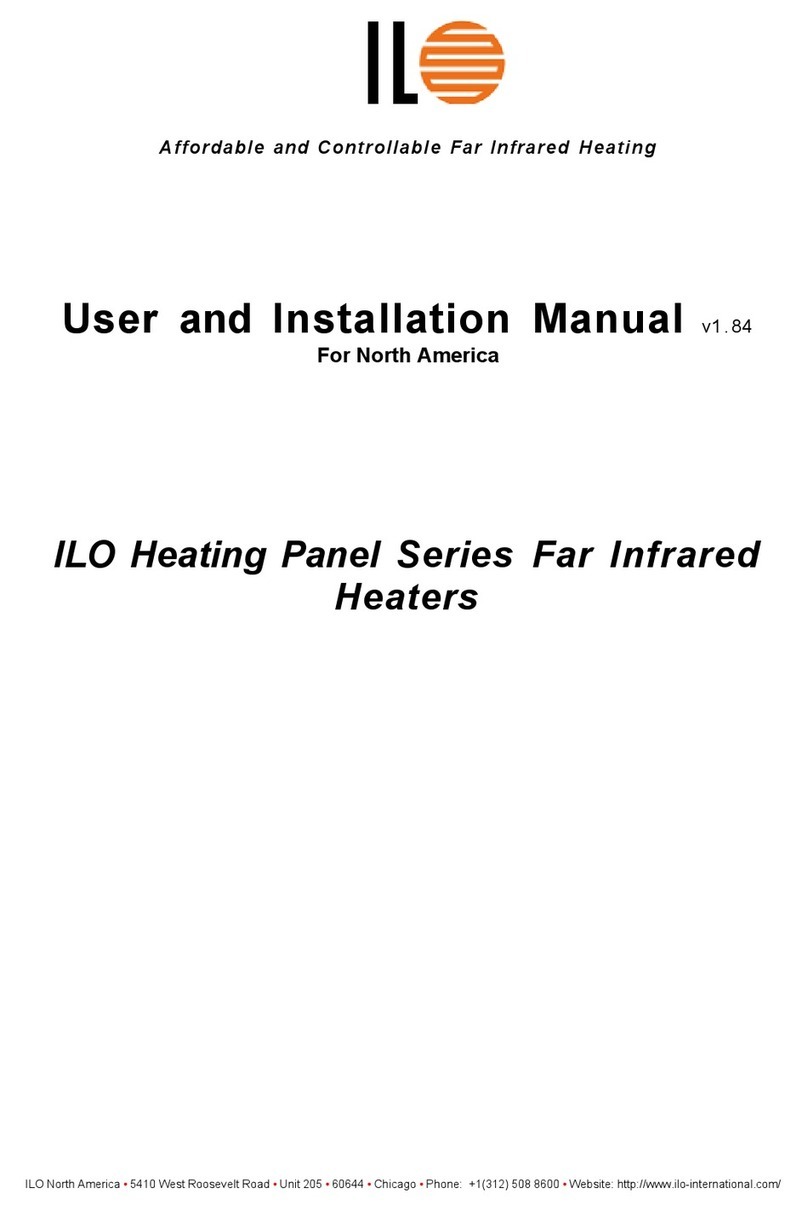
4
FR – Instructions de montage
Le montage du radiateur doit être exécuté par
un installateur spécialisé.
En fonctionnement électrique d'appoint, les
opérations suivantes sont strictement réservées
à un électricien spécialisé (en Allemagne selon
BGV A3):
• Montage et raccordement du kit électrique
• Raccordement du thermoplongeur sur le kit
électrique
Consignes de sécurité
►Lire attentivement les instructions d'utilisa-
tion et de montage avant de procéder au
montage/à la mise en service.
►Après le montage, remettre les instructions
à l'utilisateur nal.
►Respecter les consignes de sécurité dans les
instructions séparées relatives au kit élec-
trique.
DANGER
Danger de mort!
►Contrôler la position des conduites d'ali-
mentation (électricité, gaz, eau).
►Ne pas percer de conduite.
AVERTISSEMENT
Risque de blessure!
►Tenir compte du poids du radiateur (voir
page6).
►À partir de 25kg, utiliser des dispositifs
de levage ou travailler à plusieurs.
AVERTISSEMENT
Blessures corporelles et dégâts matériels!
►Contrôler la force portante du sous-sol.
Tenir compte du poids du radiateur rem-
pli (voir page 6) et des charges supplé-
mentaires possibles.
►Contrôler l'aptitude du matériel de xa-
tion et la dénir en fonction de la situa-
tion de montage.
►Tenir compte des exigences spéciales, par
ex. pour les bâtiments publics (écoles, etc.).
Conditions d'utilisation
►Respecter les conditions d'exploitation pour
les installations de chauffage d'eau chaude sa-
nitaire conformément à la norme DIN18380
« VOB Vergabe- und Vertragsordnung für
Bauleistungen», (cahier des charges pour l'oc-
troi de travaux du bâtiment).
►Respecter les critères de qualité de l'eau
conformément à la norme VDI 2035 « Ver-
meidung von Schäden in Warmwasser-Hei-
zungsanlagen» («Prévention des dommages
dans les installations de chauffage de l'eau»).
►Respecter les limites d'utilisation dans les
locaux humides conformément à la norme
DIN 55900 « Beschichtungen für Rau-
mheizkörper» («Revêtements pour radia-
teurs de chauffage»).
►N'intégrer le radiateur que dans des circuits
de chauffage fermés.
►N'entreposer et ne transporter le radiateur
que dans son emballage de protection.
Pour le fonctionnement électrique d'appoint:
►Choisir la puissance calorique du thermo-
plongeur en fonction du type de radiateur
(voir la documentation commerciale actuelle).
►En cas de montage dans des pièces équipées de
baignoires ou de douches: respecter les zones
de protection conformément aux normes
d'installations nationales (en Allemagne
DIN VDE 0100-701). Respecter également
l'ensemble des dispositions locales en vigueur.
Remarque: le montage des produits dans la
zone de sécurité1 n'est pas autorisé par le fa-
bricant.
►Recommandation conformément à la
norme CEI 60335-2-43 : an d'éviter tout
danger pour les enfants en bas âge, il
convient de monter les radiateurs de ma-
nière à ce que le tube transversal inférieur
se trouve à une distance de 600mm mini-
mum au-dessus du sol.
►S'assurer que, lorsque la vanne est fermée,
la dilatation du contenu d'eau dans le dé-
part est garantie jusqu'au vase d'expansion.
►Lors du montage d'une vanne dans le re-
tour, s'assurer que la vanne ne peut être
actionnée qu'avec un outil an d'empêcher
la fermeture accidentelle.
Réclamation
►S'adresser au fabricant.
Traitement des déchets
►Amener l'emballage dans un centre de recy-
clage ou un centre d'élimination des déchets
réglementaire. Respecter les prescriptions
locales.
Caractéristiques techniques
• Pression de service: max. 8bars
• Pression d'essai: 1,3fois la pression de service
Départ
• Départ possible à droite ou à gauche, dans
le cas d'une association avec x-link, départ
impératif à gauche.
• Température d'entrée:
–eau chaude jusqu'à 110°C (230°F)
–en fonctionnement électrique d'appoint
jusqu'à 80°C (176°F)
–en association avec x-link jusqu'à 70°C
(158°F), max. 6 bars
Remarques relatives au montage
Nombre de points de xation
Le nombre de points de xation a été déni et
testé pour les briques légères en terre cuite à
creux verticaux T14.
Pour le fonctionnement électrique d'appoint:
►Respecter les instructions de montage du
kit électrique.
►S'assurer qu'une prise de raccordement d'ap-
pareillage ou une prise murale (230V, fusible
16A) est disponible à portée de câble.
Le raccordement électrique sortant du mur
doit être facilement accessible et ne doit pas
être situé dans la surface de projection du ra-
diateur et du régulateur.
Le radiateur ne doit pas être installé directe-
ment sous une prise murale.
Pour le montage dans un chauffage monotube:
►Utiliser des raccords vissés à dérivation ré-
glable intégrée.
Raccords à vis adaptés
►Tenir compte de l'espace de construction
libre derrière l'habillage (voir g. 28, page
8).
FR – Instructions d'utilisation
Utilisation conforme
Le radiateur doit être utilisé exclusivement
pour le chauffage d'espaces intérieurs et le sé-
chage de textiles ayant été lavés à l'eau.
Toute autre utilisation n'est pas conforme à
l'usage prévu et est donc interdite.
Utilisation non conforme
Le radiateur ne doit pas être utilisé en tant que
siège, échelle ou escabeau.
Consignes de sécurité
AVERTISSEMENT
Risque de brûlure!
La surface du radiateur peut atteindre une
température de 110°C (230°F).
►Soyez prudent au toucher du radiateur.
PRUDENCE
Risque de brûlure par projections d'eau
chaude lors de la purge!
►Protégez vos mains.
Fonctionnement électrique d'appoint
►Respecter les instructions séparées du ther-
moplongeur.
►S'assurer que la radiateur est toujours rem-
pli complètement d'eau et purgé an qu'il
chauffe correctement.
►Ne pas exploiter le chauffage d'eau chaude
et l'élément chauffant simultanément.
►S'assurer que le retour est ouvert.
►Fermer la tête thermostatique.
Maintenance
►Purger le radiateur après la mise en service
et après des interruptions de service prolon-
gées.
Nettoyage
►N'utiliser que des détergents doux, non
agressifs.
Réclamation
►Le cas échéant, s'adresser à un installateur
spécialisé.
Montage et réparations
►Seul un installateur spécialisé est habilité à
effectuer le montage et les réparations an
de préserver les droits de garantie.
Traitement des déchets
►Amener les radiateurs usés et leurs acces-
soires au recyclage ou au traitement des
déchets. Respecter les prescriptions locales.
